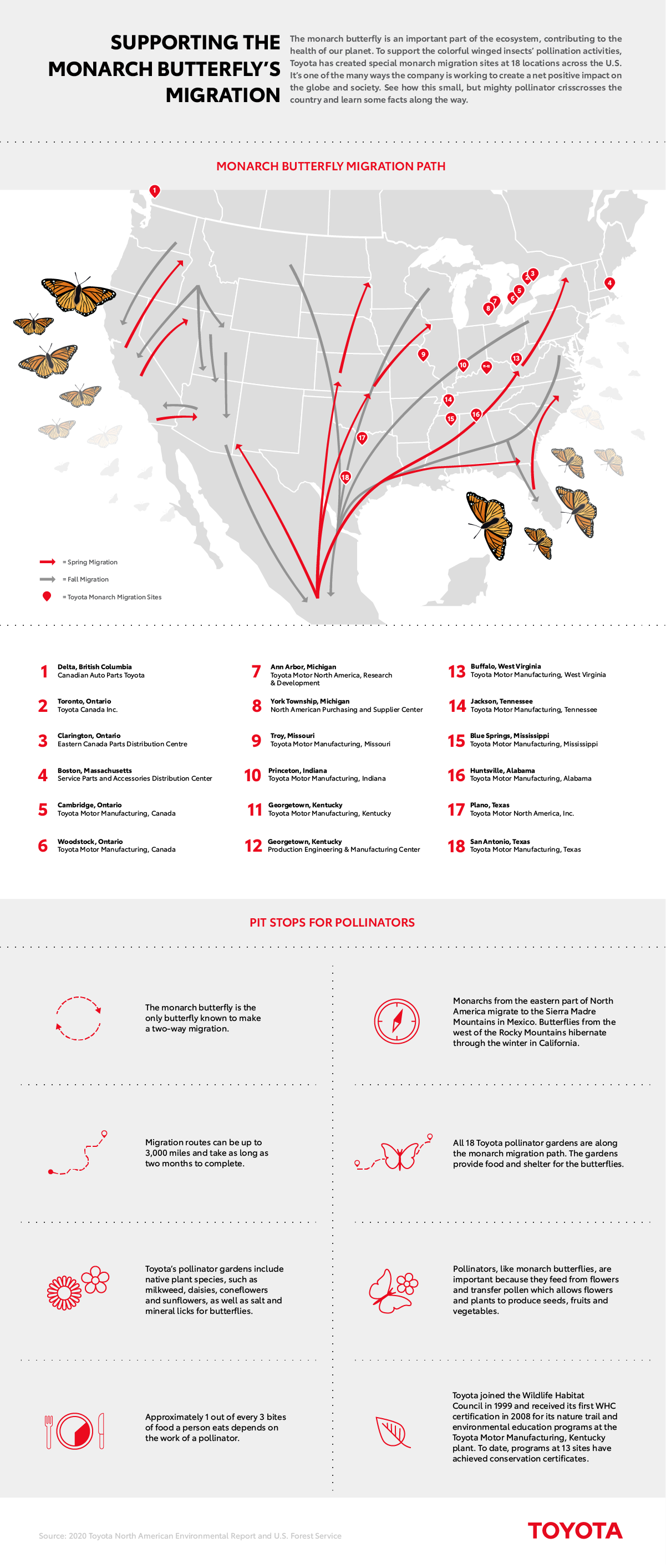Building a healthy ecosystem today will enable future generations the opportunity to enjoy the world for many years to come. It’s an effort that requires everyone to do their part — from individuals to corporations. This is why Toyota is committed to biodiversity and the protection of local species, such as the monarch butterfly.
Habitat loss and climate change are contributors to the loss of biodiversity. This has led many companies to play a significant role in achieving the bold and urgent (and necessary) steps to shift the world onto a sustainable and resilient path. As part of the Toyota Environmental Challenge 2050 — a series of six challenges to build a better, smarter, more sustainable future — the automaker is partnering with some of the world’s leading biodiversity experts to protect endangered, threatened and protected species.
As an example, Toyota maintains 18 pollinator gardens across its North American sites to nurture the monarch butterfly and other pollinator species. In 2019, Toyota expanded its focus to include indicator species, like the grey treefrog and green heron, which signal the health of an ecosystem. With the help of the Wildlife Habitat Council, who has been a partner since 1999, Toyota developed a tool to help select indicator species appropriate for individual Toyota locations. The tool gives employees evaluation criteria for each site, such as conservation status of a species, food sources and the technical expertise required to develop and maintain different habitats. As a result of the program, Toyota minimizes the disruption of natural territory and contributes to building healthy ecosystems.
Take a closer look at Toyota’s monarch butterfly migration efforts here.


Originally published September 20, 2021

 Add to Cart
Add to Cart Print
Print Convert to PDF
Convert to PDF